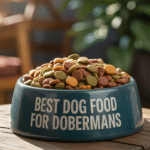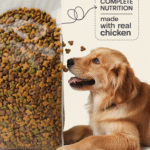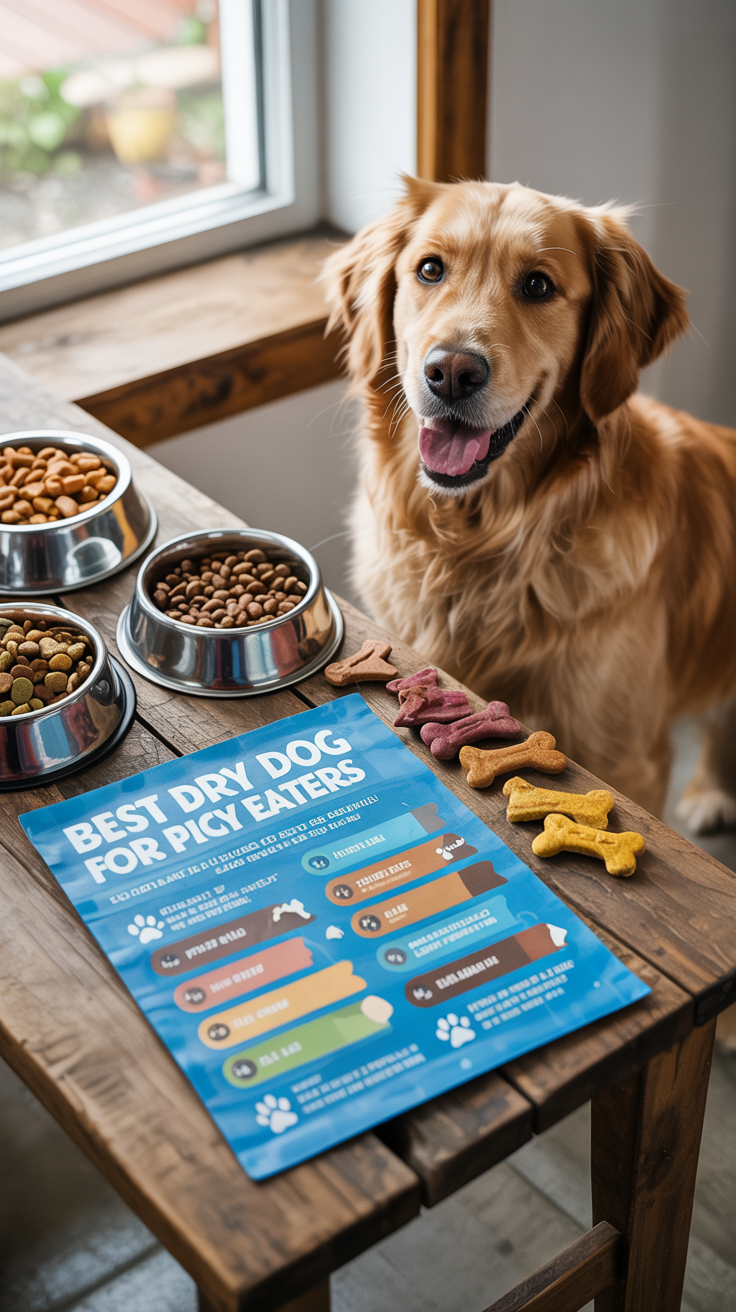If you’re a dog owner, you might wonder whether it’s safe to share your favorite snacks with your furry friend. One question that arises often is, “Can dogs eat cherries?” While cherries can be a delightful treat for humans, there are important factors to consider when it comes to dogs. Let’s explore the risks and benefits of giving cherries to your dog.
First, it’s key to understand that cherries come in various types, and not all are safe for dogs. The fleshy part of the cherry is relatively safe for dogs in small amounts, but the pits, stems, and leaves can pose serious health risks.
Here are some reasons why you need to be cautious:
- Pit Danger: Cherry pits are a choking hazard. If your dog swallows a pit, it could block their intestines, leading to severe consequences.
- Potential Toxins: The pits and leaves of cherries contain cyanogenic compounds, which can be toxic to dogs. Ingestion of these parts can lead to cyanide poisoning, though this is rare and typically occurs with large quantities.
- Digestive Issues: Some dogs may experience gastrointestinal upset from eating cherries, leading to vomiting or diarrhea.
Despite these risks, there are also some benefits to offering your dog cherries as an occasional treat:
- Low in Calories: Cherries are low in calories, making them a nice snack for dogs that need to maintain a healthy weight.
- Antioxidants: Cherries are rich in antioxidants, which can promote overall health and may have anti-inflammatory properties.
- Hydration: Since cherries have high water content, they can help keep your dog hydrated, especially in hot weather.
If you decide to give cherries to your dog, it’s crucial to do it safely. Here’s how to do it:
- **Choose Fresh Cherries**: Always opt for fresh cherries without blemishes or mold.
- **Remove the Pits**: Before giving any cherries to your dog, ensure all pits are removed. This will prevent choking and potential toxicity.
- **Offer Small Quantities**: Introduce cherries gradually and in small amounts to see how your dog reacts. Watch for any signs of digestive distress.
It’s also wise to consult with your veterinarian before adding cherries or any new food to your dog’s diet. They can provide professional advice based on your dog’s specific health needs and dietary requirements.
In case you’re looking for a viable dog-friendly fruit option, consider alternatives like:
- Blueberries
- Strawberries
- Watermelon (without seeds and rind)
Always ensure that whatever fruit you offer is safe and appropriate for your dog’s size and health status. Remember, moderation is key when introducing any new foods into your pet’s diet.
| Fruit | Safe for Dogs | Notes |
|---|---|---|
| Cherries | Yes (without pits) | Remove pits and offer in moderation |
| Blueberries | Yes | Good source of antioxidants |
| Strawberries | Yes | High in fiber and vitamin C |
| Watermelon | Yes | Remove seeds and rind |
While dogs can eat cherries in moderation and when properly prepared, caution is key. Always prioritize your pet’s safety, and don’t hesitate to ask your vet if you’re unsure about what foods are best suited for your dog. For further reading, check the following trusted resources for pet dietary advice:
Being informed about what foods are safe for your dog helps ensure a happy and healthy life for your beloved pet. Enjoy sharing safe treats with your canine companion!
Signs of Cherry Poisoning in Dogs: What to Look For
Cherries can be a delightful fruit for humans, but when it comes to your furry friend, caution is key. Dogs cannot eat cherries safely, and consuming them can lead to serious health risks. If you suspect that your dog has ingested cherries or cherry pits, it’s essential to know the signs of cherry poisoning. Early detection can make a crucial difference in the outcome.
When your dog eats cherries, the most dangerous parts are the pits, stems, and leaves. They contain cyanogenic glycosides, which can release cyanide when metabolized. Symptoms of cherry poisoning can manifest quickly, so being aware of what to look for can help you take action immediately.
Common Signs of Cherry Poisoning
Look out for the following signs if you suspect your dog has eaten cherries:
- Vomiting: This is one of the most immediate reactions. If your dog starts to vomit after eating cherries, it’s a clear red flag.
- Diarrhea: Loose stools or diarrhea can also occur as the body tries to expel the harmful substances.
- Abdominal Pain: Your dog may show signs of discomfort or pain, such as whining or an unusual posture.
- Difficulty Breathing: If your dog experiences any trouble breathing, it can be a serious sign of poisoning.
- Increased Heart Rate: Elevated heart rates may be noticeable, and observing your dog’s heartbeat can be important.
- Weakness or Lethargy: A sudden drop in energy levels can indicate that your dog is feeling severely unwell.
- Seizures: In extreme cases, toxic levels can lead to seizures. If this occurs, immediate veterinary attention is necessary.
What to Do If You Suspect Cherry Poisoning
If you notice any of these signs after your dog has eaten cherries, it’s crucial to act swiftly. Here’s a step-by-step approach:
- Take note of how many cherries your dog may have consumed and how long ago it happened.
- Call your veterinarian or an emergency animal clinic immediately. Their guidance will be vital.
- If advised by professionals, take your dog to the clinic without delay. Time is of the essence.
Your Role in Prevention
Preventing cherry poisoning is simple. Ensure that cherries are stored out of your dog’s reach, and educate family members about the dangers of certain foods. Occasionally share safe treats like carrots or apple slices instead. It’s crucial to maintain an open line of communication with your vet about your dog’s dietary needs.
If You’re Unsure, Be Safe
When it comes to your dog’s health, it’s better to err on the side of caution. If you are ever in doubt about a food, consult with your veterinarian. They can provide information tailored to your dog’s specific needs.
For more detailed health insights regarding pet care, you can visit American Kennel Club and AKC Health & Safety.
Caring for your dog includes being aware of what they can and cannot eat. The risks associated with cherries can have serious consequences. Familiarizing yourself with the signs of cherry poisoning can prepare you to act quickly if necessary. Always prioritize safety and consult your vet if you suspect that your dog has consumed something hazardous.
Safe Fruits for Dogs: Alternatives to Cherries
When it comes to our furry friends, ensuring their safety and health is a top priority. Many dog owners wonder about introducing fruits into their pets’ diets, but not all fruits are safe. While cherries are known for their delicious taste and health benefits for humans, they can be harmful to dogs. If you’re looking for safe alternatives to cherries, you’re in the right place!
Cherries, particularly the pits and stems, pose risks to dogs. The pits contain cyanide, which is toxic when consumed in large quantities. Additionally, eating too many cherries can lead to stomach upset or more severe issues. Thankfully, there are plenty of safe fruits that you can share with your furry companion. Here are some great alternatives:
- Blueberries: These tiny fruits are packed with antioxidants and vitamins. They make a delicious and nutritious snack that dogs often enjoy.
- Apple: Apples are a great source of vitamins A and C. Just be sure to remove the seeds and core, as they can be harmful to dogs.
- Watermelon: Watermelon is refreshing and hydrating, especially during the summer. Make sure to remove the seeds and rind to keep your pet safe.
- Pineapple: Packed with vitamins and minerals, pineapple can be a fun treat for dogs. Offer it in small, manageable pieces.
- Banana: Bananas are rich in potassium and energy-boosting carbohydrates. They can be given in moderation to avoid any digestive issues.
Each of these fruits can be a fantastic addition to your dog’s diet, not only providing essential nutrients but also keeping mealtime fun. However, moderation is key; introducing new fruits should be done gradually to ensure your dog doesn’t experience any adverse reactions.
While it’s important to focus on what dogs can safely eat, avoiding toxic foods is just as crucial. In addition to cherries, there are several other fruits and foods that you should steer clear of:
- Grapes and raisins: These can cause kidney failure in dogs, even in small amounts.
- Avocado: The pit and skin contain persin, which can be harmful in large quantities.
- Citrus fruits: While small amounts are generally safe, large portions can cause upset stomachs.
If you’re ever unsure whether a fruit is safe for your dog, consulting your veterinarian is a smart choice. Vets can provide personalized advice based on your dog’s specific health needs and dietary requirements.
For those who want to know more about canine nutrition, reliable resources can provide invaluable information. Trusted websites like AKC and Dogster offer guidance on safe fruits for dogs and much more.
Now, if you’re curious about how to serve these fruits to your dog, here are some convenient serving suggestions:
| Fruit | Serving Suggestion |
|---|---|
| Blueberries | Whole or mashed; great for training treats! |
| Apple | Sliced into bite-sized pieces, without seeds. |
| Watermelon | Cut into cubes, ensure all seeds are removed. |
| Pineapple | Cubed fresh pineapple without the core. |
| Banana | Mashed or in slices; can be mixed into their food! |
A variety of fruits into your dog’s diet can provide health benefits while keeping them excited about their meals. Remember, fruits should never replace a balanced diet and should only be given as occasional treats. Always monitor your dog for any signs of allergic reactions or digestive upset after trying new foods.
While cherries might not be a safe choice for dogs, there are plenty of delightful alternatives available. Embrace the opportunity to diversify your pet’s diet with wholesome fruits that can enhance their health and keep them happy!
Preparing Fruits for Your Dog: Tips for Safe Feeding
Many pet owners love to share their fruits with their furry friends, but it’s essential to know how to prepare them safely. Not all fruits are safe for dogs, and improper preparation can lead to health issues. Here are some tips to help you properly prepare fruits for your dog.
Choosing Safe Fruits
Before you start preparing fruits, it’s essential to know which ones are safe for your dog. Some fruits are healthy and can be a fun snack for your pup, while others can be harmful. Here’s a quick list of safe and unsafe fruits:
- Safe: Apples (without seeds), bananas, blueberries, strawberries, watermelon (seeds removed)
- Unsafe: Grapes, raisins, cherries, avocados, and citrus fruits
Always research before introducing a new fruit into your dog’s diet. Not every fruit is suitable for all dogs, especially if they have special dietary needs or allergies.
Washing Fruits Before Serving
It’s crucial to wash fruits thoroughly before giving them to your dog. Fruits can carry pesticides or chemicals that are harmful. Here’s how to wash fruits:
- Rinse the fruit under cold water.
- Use a produce brush to scrub the surface if necessary.
- Pat dry with a clean towel.
This simple step removes dirt and chemicals, making the fruit safer for your dog. Remember, your goal is to provide a healthy treat, not a potentially harmful one.
Cutting and Serving Sizes
When it comes to serving fruit, always cut it into small, manageable pieces to prevent choking. This is especially important for larger fruits, like apples or melons. Here’s a guide for portion sizes:
| Fruit | Serving Size for Dogs |
|---|---|
| Apple | 1-2 slices (seedless) |
| Banana | 1/2 banana |
| Blueberries | 3-4 berries |
| Watermelon | 1/2 cup (seeds removed) |
Start with smaller pieces if your dog hasn’t had the fruit before to see how they react. Watch for any signs of allergies, such as itching or upset stomach.
Removing Dangerous Parts
Some fruits have parts that can be harmful to dogs. For example, cherry pits contain cyanide, which is toxic. Always remove any seeds, pits, or tough skins before feeding fruits to your dog. Here’s how:
- For apples, remove the seeds and core.
- For cherries, discard the pits.
- For watermelon, ensure all seeds are removed.
Keeping these in mind will protect your furry friend from potential danger.
Introduce New Fruits Gradually
When introducing fruits to your dog’s diet, do it gradually. Start with a small piece and observe how your dog reacts over the next 24 hours. Look for any signs of digestive upset, such as diarrhea or vomiting. If your dog seems to enjoy the fruit without any adverse effects, you can gradually increase the quantity.
Consult Your Veterinarian
If you’re unsure about what fruits are best for your dog or if you have concerns regarding their health, consult your veterinarian. They can provide specific recommendations that suit your dog’s needs. Always prioritize your dog’s health above all else.
For more information about dog nutrition, check out these reputable resources:
With these tips, you can ensure that the fruits you share with your dog are safe, healthy, and enjoyable for both of you. Always remember that moderation is key when it comes to treats, including fruits.
Nutritional Benefits of Fruits for Dogs: What’s Safe and Healthy?
Many pet owners ask themselves what fruits are safe and healthy for their dogs. Fruits can provide a delicious and nutritious addition to your canine friend’s diet. However, not all fruits are safe for dogs to eat. Understanding which fruits are beneficial can help you make informed choices. Here’s a look at the nutritional benefits of various fruits for dogs, and what you should consider before sharing any goodies with your furry friend.
Fruits come packed with vitamins, minerals, and antioxidants that can promote good health in dogs. They can support digestion, boost immunity, and enhance overall well-being. Here are some fruits that are generally considered safe for dogs:
Apple
Apples are a fantastic source of vitamins A and C, as well as fiber. Be sure to remove the seeds and core before offering them to your dog, as these can pose health risks. Slice the apple into small pieces to make it easier for your pup to chew.
Blueberries
Blueberries are rich in antioxidants, making them a great choice for fighting cell damage. They are low in calories and high in fiber, which can aid digestion. Dogs love their sweet taste, and you can offer them as a treat or mix them into your dog’s food.
Banana
Bananas are an excellent source of potassium, vitamin C, and vitamin B6. They can provide a quick energy boost, making them a perfect treat after a walk. However, due to their sugar content, moderation is key.
Watermelon
Watermelon is 92% water, which makes it a hydrating snack. It contains vitamins A, B6, and C, plus potassium. Remove the seeds and rind to ensure it is safe for your dog.
Strawberries
Strawberries are another berry option that is packed with antioxidants and fiber. They can help with inflammatory issues and are low in calories, making them a healthy treat for dogs. Just be cautious, as too many may cause an upset stomach due to their natural sugar content.
Pineapple
Pineapple is loaded with vitamins, minerals, and bromelain, which can help with digestion. Offer fresh pineapple, and avoid canned varieties packed in syrup, which can be harmful due to added sugars.
Peach
Fresh peaches are a source of vitamins A and C. Ensure to remove the pit, as it can be a choking hazard and contains cyanide. Always offer small, bite-sized pieces.
Safe Serving Tips
When feeding your dog fruits, keep these tips in mind:
- Introduce new fruits slowly to check for allergies or digestive issues.
- Always wash fruits to remove pesticides and dirt.
- Start with small amounts, as too much fiber can lead to digestive problems.
- Some fruits may be harmful; always research or consult your vet before sharing.
Fruits to Avoid
While many fruits are safe, some can be toxic to dogs. Keep your dog away from:
- Grapes and raisins – can cause kidney failure.
- Citrus fruits (oranges, lemons) – can upset the stomach.
- Cherries – pits are dangerous to dogs.
Before adding any fruit to your dog’s diet, it’s a good practice to consult your veterinarian. They can provide insights based on your pet’s health and dietary needs.
More Resources
For more guidance on your dog’s nutrition and safe food practices, check out these resources:
Understanding the nutritional benefits of fruits for dogs is essential for providing a balanced diet. Choose the right fruits carefully, and enjoy sharing healthy snacks with your furry companion. A little fruit can go a long way in boosting your dog’s health and happiness!
Conclusion
When considering whether you can let your dog enjoy cherries, it’s crucial to weigh the risks and benefits. While cherries offer some nutritional value, they carry the danger of cyanide poisoning, especially with the pits, leaves, and stems that should never be consumed by dogs. If you suspect your dog has ingested cherries, be vigilant for signs of poisoning, including vomiting, difficulty breathing, or lethargy, and contact your veterinarian immediately.
Fortunately, many safe and healthy fruit options exist as alternatives to cherries. Fruits like blueberries, watermelon, and bananas not only please your pup’s palate but also come with numerous health benefits. These fruits are easier on your dog’s digestive system and nourish them without the associated health risks of cherry consumption.
When introducing any new fruit into your dog’s diet, preparation is critical. Always wash fruits thoroughly and cut them into manageable sizes to prevent choking. Removing any seeds or pits will provide a safer snacking experience for your furry friend.
Fruits into your dog’s diet can enhance their nutritional intake and provide essential vitamins and antioxidants. However, it’s vital to choose items that are known to be safe and beneficial for dogs. Keeping your dog healthy and happy means being informed about what they can and cannot eat. Always prioritize their safety and well-being when selecting treats, ensuring that their experience is enjoyable and stress-free.
















Leave a Reply